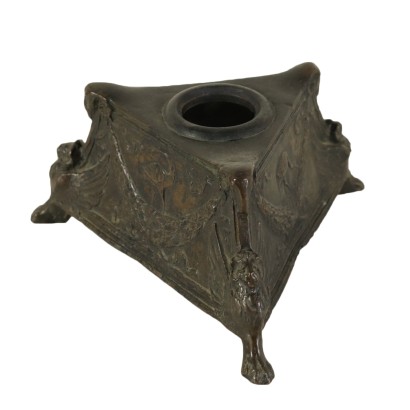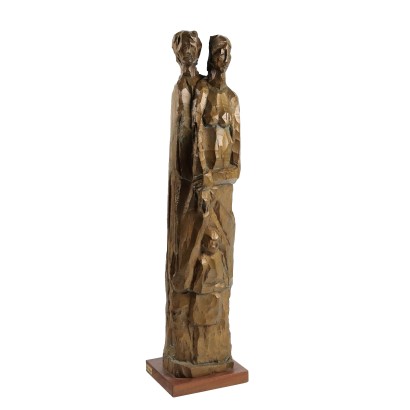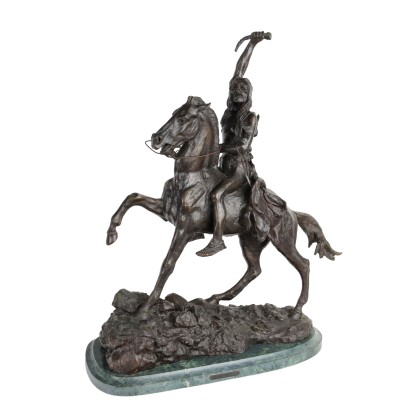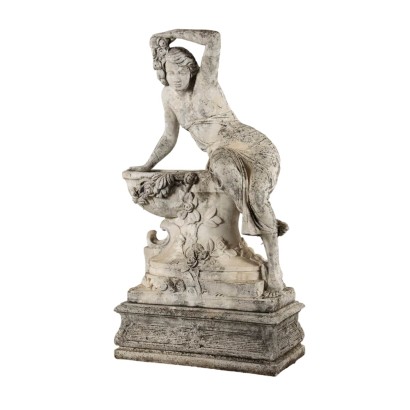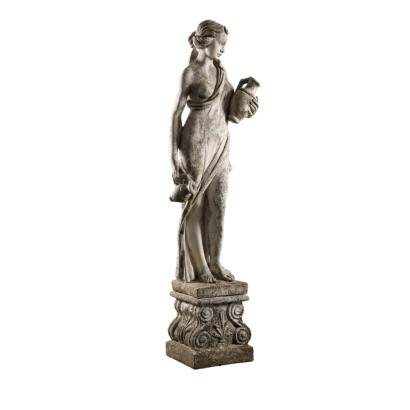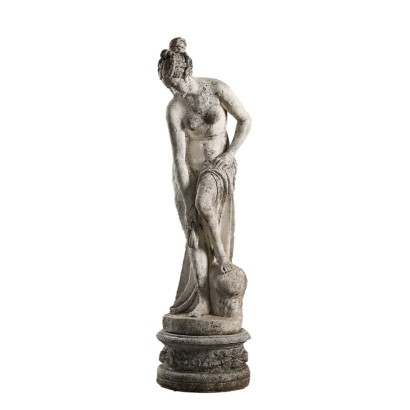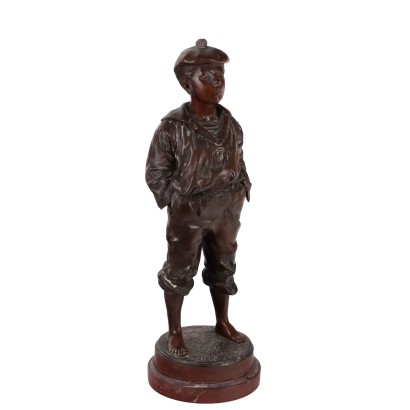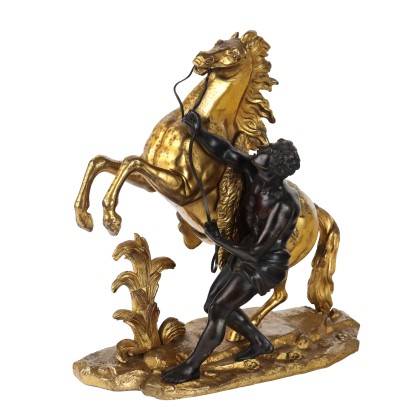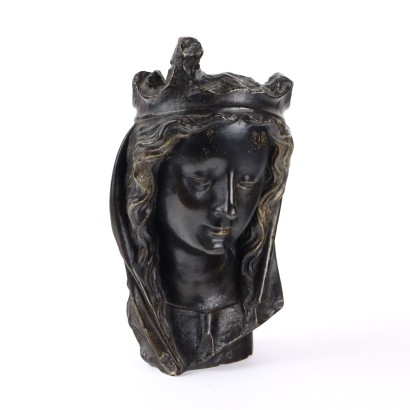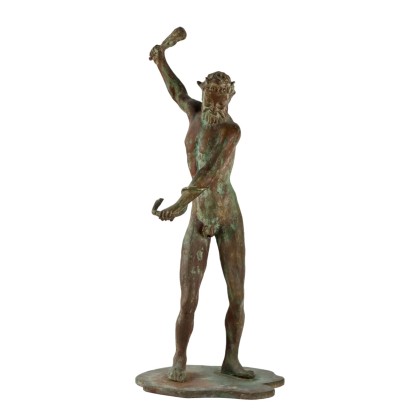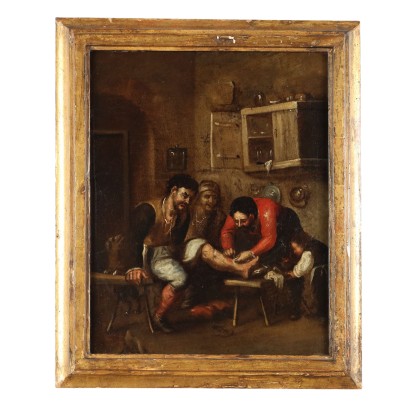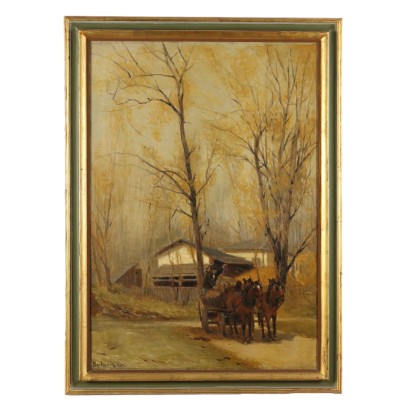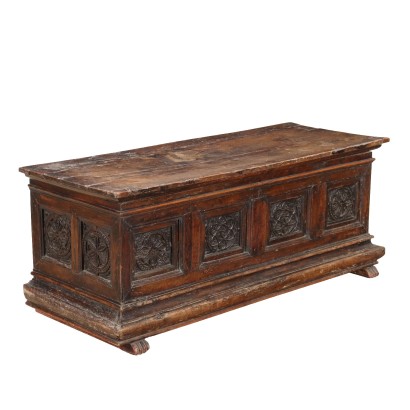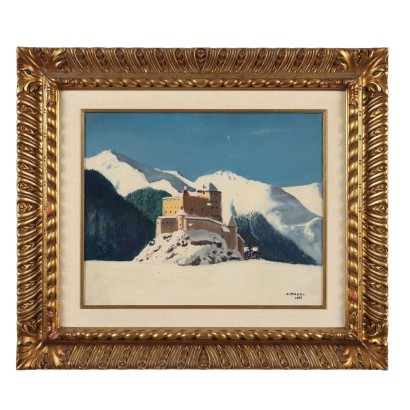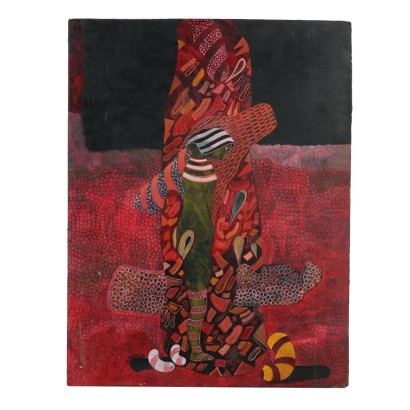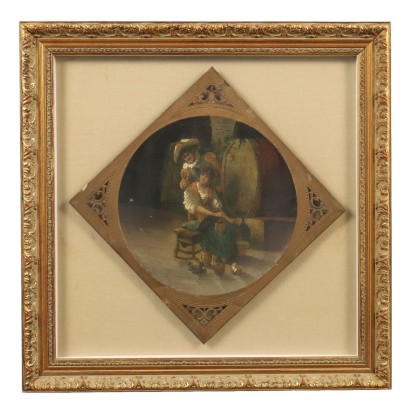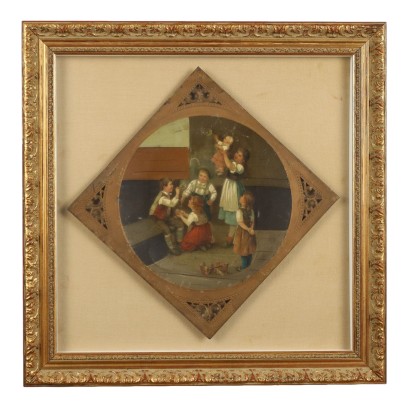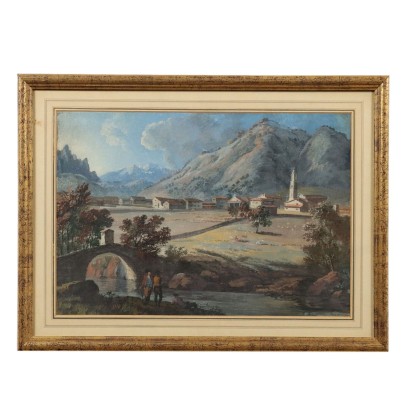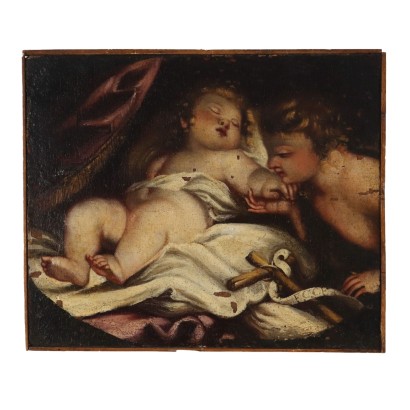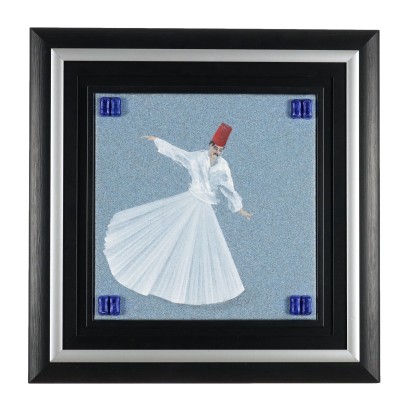Antique Basement Renaissance Italy First Half of 1500s
Features
Style: Renaissance (1460-1630)
Age: 16th Century / 1501 - 1600
Origin: Toscana, Italy
Material: Bronze
Description
A basement of the Renaissance, bronze. Three feet and a hole in the middle. Three paws of winged lions support the basement. Bas reliefs depicting garlands surmounted by storks are represented within a reserve contained in moldings on each side of the basement. The three uprights are surmounted by ram's heads. The round relief was probably welded in the 19th century to convert the item in an inkpot. Manufactured in Tuscany, Italy, first half of the 16th century.
Product Condition:
Good condition. Wear consistent with age and use. Any damage or loss is displayed as completely as possible in the pictures.
Maximum size (cm):
Height: 9
Width: 17
Depth: 17
Certificate issued by: Enrico Sala
Additional Information
Style: Renaissance (1460-1630)
During the Renaissance, furniture took on architectural forms, perfect proportions, and was adorned with rationally arranged decorations, taken from Greco-Roman iconography.Supports and feet carved in the shape of an acanthus leaf or a lion's paw appeared at least from the early 1460s.
Alongside parallelepiped chests, others appeared in the shape of a classical sarcophagus, with surfaces marked by ornamental metrics rigidly disciplined within pilasters and frames.
The novelty of the sculptural carving decoration derived from archaeological remains triumphs, decoded and reworked stylistic elements in different compositional harmonies arranged in alternating games of dentils, ovules, volutes, acanthus-shaped spirals, loricature, strigliature, grotesque candelabras, and the entire pantheon of pagan mythology comes to life again, in particular to decorate chests, which from their initial function as containers for the wedding dowry take over the new instance of real parade furniture.
It is worth remembering that the displayed furniture was generally richly embellished with gold leaf gilding.
In the first decades of the sixteenth century the use of Certosina inlay definitively faded away, although even in the Renaissance this technique had great fame, just think of the activity of the Tasso workshop in Florence.
Learn more about the Renaissance style with our insights:
The Renaissance style
A pair of candle holders between the Renaissance and Baroque
FineArt: The Renaissance
FineArt: Renaissance Cassina gilded, Belloni family – Venice, 16th century
The dictionary of antiques - Savonarola
INSERT ADDITIONAL LINKS
The Austrian taste of Baroque
The history of furniture in the Renaissance
Age: 16th Century / 1501 - 1600
16th Century / 1501 - 1600Material: Bronze
Other customers have searched:
Bronzi, bassorilievo, rilievo, tuttotondo, busto, scultura, statua..
Approfondimenti
Per saperne di più, consulta i nostri approfondimenti del blog su bronzi e sculture:
Due piccole sculture in bronzo molto significative
Il gusto Neoclassico ben espresso in una piccola scultura di marmo
La selezione completa delle migliori sculture, statue e bronzi su FineArt
Eccone alcune presentate su FineArt:
Coppia di sculture in bronzo francesi, del 1820 ca.
Le sculture in bronzo e la fusione a cera persa
Gli Apostoli ritrovati: un importante ricongiungimento
Apostolo nell'orto degli ulivi, scultura in tiglio del XVI secolo
Ninfa e Fauno, sculture in bronzo di Siccardi, anni venti del XX secolo
Busto in Marmo Primavera, prima metà XIX secolo
Coppia di sculture di angeli in terracotta di Mellone, 1730 ca.
Antonio Canova: dal disegno al marmo
Madonna del cardellino, Scultura in legno francese del XVI
La ceroplastica, una antica tecnica scultorea
Altorilievo "strage degli innocenti" - Napoli - 1685
Scultura in biscuit di Luca Madrassi su Eolo e Cupido
Allegoria della Sapienza, inizio del XVIII secolo, scultura in legno dipinto
Busto in Terracotta, inizio XIX secolo
Busto di nobiluomo in marmo bianco, 1837
Busto in biscuit di Francesco I D'Asburgo
Busto maschile in marmo bianco, G. Emanueli F. 1838
Approfondimenti
Per saperne di più, consulta i nostri approfondimenti del blog su bronzi e sculture:Due piccole sculture in bronzo molto significative
Il gusto Neoclassico ben espresso in una piccola scultura di marmo
La selezione completa delle migliori sculture, statue e bronzi su FineArt
Eccone alcune presentate su FineArt:
Coppia di sculture in bronzo francesi, del 1820 ca.
Le sculture in bronzo e la fusione a cera persa
Gli Apostoli ritrovati: un importante ricongiungimento
Apostolo nell'orto degli ulivi, scultura in tiglio del XVI secolo
Ninfa e Fauno, sculture in bronzo di Siccardi, anni venti del XX secolo
Busto in Marmo Primavera, prima metà XIX secolo
Coppia di sculture di angeli in terracotta di Mellone, 1730 ca.
Antonio Canova: dal disegno al marmo
Madonna del cardellino, Scultura in legno francese del XVI
La ceroplastica, una antica tecnica scultorea
Altorilievo "strage degli innocenti" - Napoli - 1685
Scultura in biscuit di Luca Madrassi su Eolo e Cupido
Allegoria della Sapienza, inizio del XVIII secolo, scultura in legno dipinto
Busto in Terracotta, inizio XIX secolo
Busto di nobiluomo in marmo bianco, 1837
Busto in biscuit di Francesco I D'Asburgo
Busto maschile in marmo bianco, G. Emanueli F. 1838
Product availability
The product can be seen at Milan
Immediate availability
Ready for delivery within 2 working days from ordering the product.



